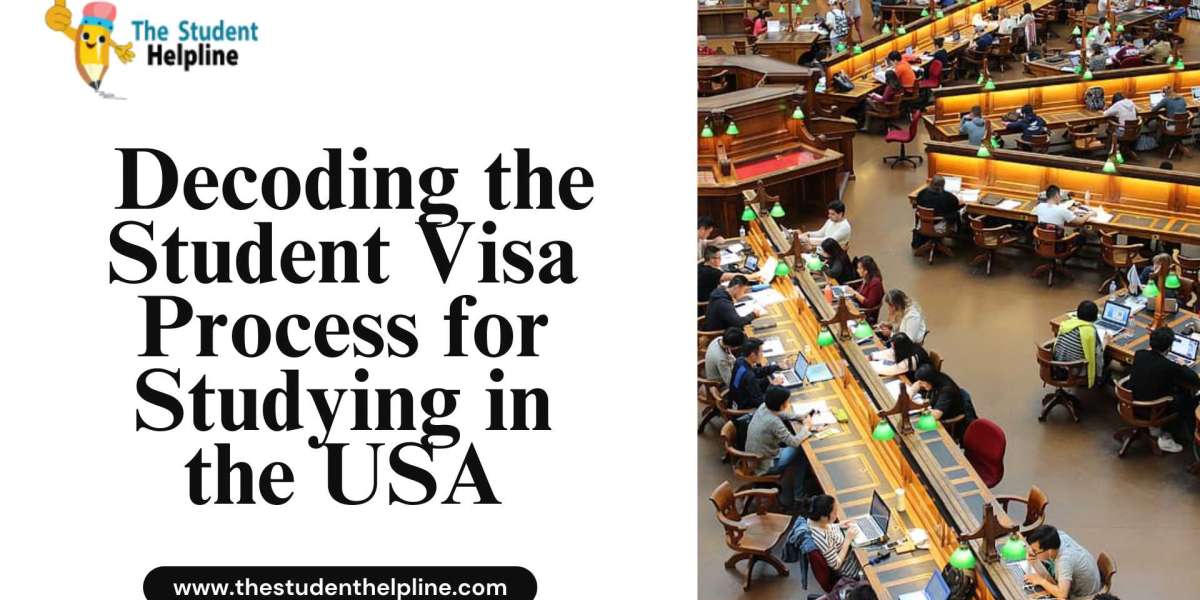Studying in the USA is a dream for many international students, as it offers world-class education, state-of-the-art facilities, and exposure to a multicultural environment. However, obtaining a student visa is a critical step in this journey. Understanding the visa process is essential for anyone planning to pursue their education in the USA. This article provides a comprehensive guide to decoding the student visa process, ensuring your path to studying in the USA is smooth and successful.
Understanding the Types of U.S. Student Visas
There are three main types of U.S. student visas:
- F-1 Visa (Academic Students):
This is the most common visa for students who plan to enroll in an accredited U.S. college, university, high school, or English language program. - M-1 Visa (Vocational Students):
Designed for students pursuing non-academic or vocational training in the USA. - J-1 Visa (Exchange Visitors):
For students participating in exchange programs, including university exchanges, short-term internships, or practical training.
For most students aiming to study in the USA, the F-1 visa is the appropriate choice.
Step-by-Step Process for Obtaining a Student Visa
Step 1: Secure Admission to a U.S. Institution
Before applying for a visa, you must be accepted into a U.S. institution authorized to enroll international students under the Student and Exchange Visitor Program (SEVP). Once admitted, the institution will provide you with a Form I-20 (for F-1 or M-1 visas) or DS-2019 (for J-1 visas).
Step 2: Pay the SEVIS Fee
The Student and Exchange Visitor Information System (SEVIS) fee must be paid before you can schedule your visa interview. As of now, the SEVIS fee for an F-1 visa is $350, while the fee for a J-1 visa is $220. Ensure you keep the receipt, as you’ll need it during the interview.
Step 3: Complete the DS-160 Form
The DS-160 is an online application form for non-immigrant visas. Completing this form accurately is crucial. After submission, you will receive a confirmation page with a barcode, which you need to print for your visa interview.
Step 4: Pay the Visa Application Fee
The visa application fee for most U.S. student visas is $185. This fee is non-refundable and must be paid before scheduling your visa appointment.
Step 5: Schedule Your Visa Interview
Visit the U.S. embassy or consulate website for your country to schedule an interview. The wait times for interviews vary, so it’s wise to book as early as possible.
Preparing for the Visa Interview
Key Documents to Gather
- Passport: Valid for at least six months beyond your intended stay in the USA.
- Form I-20 or DS-2019: Issued by your U.S. institution.
- DS-160 Confirmation Page: With barcode.
- SEVIS Fee Receipt: Proof of payment.
- Visa Application Fee Receipt: Evidence of payment.
- Photograph: Follow the U.S. visa photo guidelines.
- Academic Documents: Transcripts, standardized test scores (GRE, TOEFL, IELTS), and letters of admission.
- Proof of Financial Support: Bank statements, scholarship letters, or affidavits showing sufficient funds to cover tuition and living expenses.
- Ties to Home Country: Evidence of intent to return, such as family ties, property documents, or job offers.
Common Questions to Prepare For
- Why do you want to study in the USA?
- Why did you choose this university?
- What is your course of study?
- Who will finance your education?
- Do you plan to return to your home country after graduation?
Being clear and honest in your responses is vital.
Visa Interview Day Tips
- Dress Professionally: First impressions matter.
- Be Punctual: Arrive at least 15-30 minutes before your appointment.
- Stay Confident and Polite: Answer questions clearly and concisely.
- Carry Originals and Copies: Ensure you have all required documents.
Remember, the consular officer’s primary concern is whether you are a genuine student and whether you intend to return to your home country after your studies.
After the Interview
Visa Approval
If approved, the consular officer will keep your passport to affix the visa. The processing time can vary, but you’ll usually receive your passport with the visa stamp within a few days.
Visa Denial
If denied, the officer will provide a reason. Common reasons include insufficient financial proof, unclear academic intent, or lack of ties to your home country. Address these concerns if you plan to reapply.
Key Tips for a Smooth Process
- Start Early: Begin the process 6-12 months before your program’s start date.
- Double-Check Documents: Missing or incorrect paperwork can delay your application.
- Practice Interviewing: Mock interviews can boost your confidence.
- Stay Updated: Policies and fees can change, so regularly check the U.S. embassy’s website.
- Avoid Fraud: Ensure all documents and information are authentic.
Maintaining Your Student Visa Status
Once you arrive for study in USA, it’s essential to maintain your student visa status:
- Enroll Full-Time: Ensure you meet the minimum credit requirements.
- Keep SEVIS Updated: Notify your designated school official (DSO) of any changes, such as address or program updates.
- Avoid Unauthorized Work: Only work on-campus or obtain proper authorization for off-campus employment.
- Comply with Program Deadlines: Keep track of your program’s duration and visa expiry date.
Conclusion
Decoding the student visa process for studying in the USA requires careful planning, preparation, and attention to detail. By following the steps outlined in this guide, you can confidently navigate the complexities of the visa application and take a significant step toward achieving your academic dreams. Remember, the USA offers unparalleled opportunities for international students, and with determination and preparation, you can make your goal of studying in the USA a reality.














